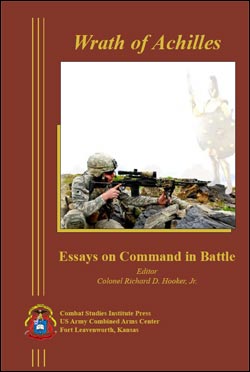
By Colonel Richard D. Hooker, Jr.
220 Pages
Published: 2011
“Sing Goddess, of the wrath of Achilles, Peleus’ son.” So begins the Iliad, the greatest war epic in western culture. Since the dawn of recorded history, the history of man has been nearly synonymous with the history of war, a history that begins with Homer and continues today. Then as now, war remains the ultimate arbiter of human affairs, an awful and ever-present reminder of humanity’s failure to escape its wrathful roots. Seemingly inescapable, war is supremely important because it is the great destroyer of states and populations and whole cultures. And so the question itself is crucial to the survival of the state.
Download the PDF